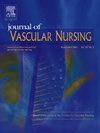Health literacy in stroke disease: A systematic review
IF 1.2
Q3 NURSING
引用次数: 0
Abstract
Background
Health literacy has been demonstrated to be a factor that influences patients’ ability to retain clinical education and counselling.
Aims
To describe: (1) the importance of health literacy in the prevention of stroke; (2) the correlation of risk factors with health literacy; and (3) the importance of health literacy in post-stroke outcomes.
Methods
A systematic review was conducted using the following databases: PubMed (via Medline), CINAHL (via EBSCO), PsycINFO (via EBSCO), and Web of Science (via EBSCO) for studies focused on health literacy in stroke. We included qualitative, quantitative and observational studies. The critical appraisal tool of JBI-Checklists was used to assess the methodological quality of the included studies.
Results
Thirty-three studies, involving 35,935 participants, were selected for this systematic review. Most of the studies (41 %) were cross-sectional. Health literacy levels among the general population and stroke patients were found to be relatively low, indicating the need for increased stroke education. Hypertension and stress were the most frequently identified risk factors while pregnancy and oral contraceptives, and anticoagulants were the least. People at risk of stroke have indicated a desire for more practical information and individually tailored behavioral interventions.
Conclusions
The results of this study highlighted the deficiency in health literacy among different populations. We noticed that even a simple educational intervention can help to improve health literacy. Targeting the general public is important in order to rapidly translate knowledge into action and to reduce the time from symptom onset to hospital arrival as time plays an important role in stroke.
卒中疾病的健康素养:系统综述
健康素养已被证明是影响患者接受临床教育和咨询的能力的一个因素。目的:(1)健康素养在卒中预防中的重要性;(2)危险因素与健康素养的相关性;(3)健康素养对脑卒中后预后的重要性。方法采用PubMed(通过Medline)、CINAHL(通过EBSCO)、PsycINFO(通过EBSCO)和Web of Science(通过EBSCO)等数据库对卒中健康素养相关研究进行系统回顾。我们包括定性、定量和观察性研究。使用JBI-Checklists这一关键评估工具来评估纳入研究的方法学质量。结果33项研究共纳入35,935名受试者。大多数研究(41%)是横断面研究。一般人群和中风患者的健康素养水平相对较低,这表明需要加强中风教育。高血压和压力是怀孕和口服避孕药时最常见的危险因素,抗凝血剂是最少的。有中风风险的人表示希望获得更实用的信息和个性化的行为干预。结论本研究结果突出了不同人群健康素养的不足。我们注意到,即使是简单的教育干预也可以帮助提高健康素养。针对一般公众是很重要的,以便迅速将知识转化为行动,并缩短从症状出现到到达医院的时间,因为时间在中风中起着重要作用。
本文章由计算机程序翻译,如有差异,请以英文原文为准。
求助全文
约1分钟内获得全文
求助全文
来源期刊

Journal of Vascular Nursing
NURSING-
CiteScore
1.40
自引率
0.00%
发文量
33
期刊介绍:
Journal of Vascular Nursing provides clinical information regarding aortic and peripheral aneurysms, upper and lower extremity arterial disease, acute and chronic venous disease, and more. Original, peer-reviewed articles present descriptions, etiologies, diagnostic procedures, medical and surgical treatment and nursing implications of vascular system disorders.
 求助内容:
求助内容: 应助结果提醒方式:
应助结果提醒方式:


